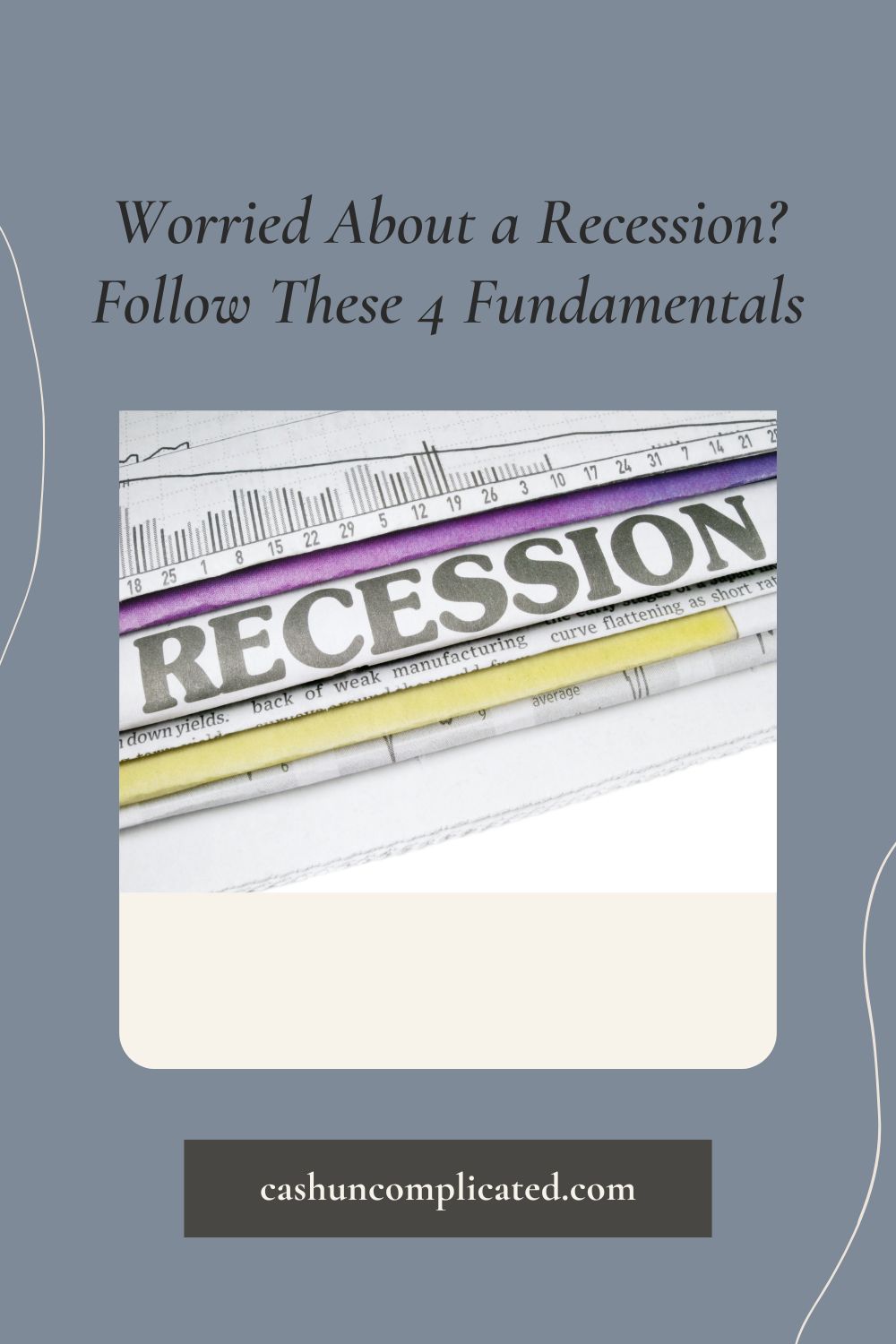Most of us have heard the advice: start investing early and make your money work for you. Which is very solid advice–and advice I would give people as well. But what if you are like me and didn’t get started until later? In this post, I focus specifically on personal finance tips for late starters.
Just because you’re a personal finance late starter doesn’t doom you to financial failure. Is it going to make things a little more challenging than someone who began investing in their 20’s? Of course, but it’s a challenge that can be overcome.
There’s a quote I cite in my book Cash Uncomplicated that reads, “The best time to plant a tree was 20 years ago, the second best time is now.” So if you’re one of the personal finance late starters like I was, that quote, and this post, is for you.
Late Starter Defined
Depends on who you ask, but a personal finance late starter is normally thought of as someone who is in their late 30’s or over who is not in the financial position they want to be in. There’s often a variety of reasons for this such as consumer debt, medical bills, lack of education, unexpected life issues, etc.
If you consider yourself to be one of the personal finance late starters, there’s no judgement. You are where you are, and all anyone can control is their actions today. I consider myself to be a late starter because I basically financially struck out financially my entire 20’s and early 30’s.
Personal Finance Tips for Late Starters
Fortunately, there are many actions you can take to not only catch up, but to get ahead financially. Being a late starter doesn’t relegate you to a lifetime of financial struggles. Many people have gotten a late start and have come out just fine. Yes, you’ll have some added challenges, but this isn’t insurmountable.
The following list of tips isn’t designed to be exhaustive, but rather a really good starting point. Some of the tips may apply to you while others won’t. Take what applies and begin taking action.
Tip Number 1: Define Your Goals
This tip is often ignored or overlooked. Don’t make that mistake! Clearly define your goals. Doing so will provide you clarity on what steps you need to take to put you in the financial position you want to be in. Your goals and values are your roadmap of sorts, and without them you are rudderless. Potential questions to ask yourself to help with your goals:
- What are my values?
- Are there certain things I want to do in life?
- How much money will I need for these things?
- Do I want to fully retire or work part-time?
Tip Number 2: Create a Plan
The next step is to create a plan. Your plan is going to look different than someone in their teens or 20’s since you’re starting later. So you’ll want to create an accelerated plan with your goals in mind.
For example, if you are 45 years old with minimal to no investments, you’ll want to save and invest more than you would have even a few years ago. Or if you’re in consumer debt, create a plan to get out of it quickly. Sounds overly simplified, but it really doesn’t have to be that complicated.
If you need help with the how, a good financial coach or a fiduciary financial advisor is a good place to start. Oftentimes working with a professional increases accountability and helps to formulate a solid plan. Once you have your plan, all you have to do is follow it.
A good plan should include:
- Your values
- Goals with timelines
- Methodology to reach goals
Tip Number 3: Get Out of Consumer Debt
This tip is equally relevant for personal finance late starters or someone fresh out of college. It’s a solid tip for anyone, of any age or career position. Get out of consumer debt. Getting out of consumer debt is one of the most powerful things you can do to create a solid financial foundation.
It wipes the slate clean and allows you to put your money into savings and investments rather than paying interest to the bank or creditor. Or in other words, it gives you freedom and control over where your money goes.
Tip Number 4: Automate Your Money
For personal finance late starters, it’s especially important to create an infrastructure for your money. That means automating your money so that it goes exactly where you want it to every month. Automate it and forget it is a very powerful mantra–because it works.
For example, if part of your plan is to invest $1,500 per month, you’ll want to set up an automation for exactly that amount. You can set up the money to be directly contributed from your paycheck, or it can from your savings account– whichever is easier for you. The important part is to set up the automation.
That means that every month, $1,500 will move from either your paycheck or your checking account into an investment account. You’ll quickly get used to this and won’t miss the money after a few months.
If part of your goal is to also increase your investments by $200 per year, you’ll set up that automation as well. So for the first year you’ll automatically contribute $1,500 to your investment account. Then after year one you’ll add $200 to make it $1,700. After only a few years you’ll be investing over $2,000 per month, which will greatly help you catch up quickly.
Tip Number 5: Contribute More Than You Normally Would
Someone who starts investing at an early age can get away with investing low amounts of money because they have time on their side to allow compounding to occur. For personal finance late starters though, time isn’t as on your side. It’s still on your side, just not as much as it would have been.
The antidote to that is to contribute more than you normally would. How much more depends on your goals and your current financial position. Some may need to max out their Roth IRA’s, 401k’s, 403b’s, etc. while others might need to contribute just a little more. Either way–if you’re behind, you’ll need to invest more than you normally would have.
Which isn’t a problem, it’s actually a solution. Sure, it’s a challenge but it’s not an insurmountable challenge. That mindset alone will greatly increase your chances of success, no matter where you are in your financial position.
Tip Number 6: Leverage Your Experience
Someone in their mid 20’s who hasn’t started saving or investing yet is in a different financial position than someone in their mid 40’s who also hasn’t started saving or invested. Clearly, the 20 something has an advantage in that they have a lot of time left to invest. The person in their mid 40’s also has a clear advantage–experience is on their side.
Here’s what I mean. The mid 40-year old has had years of life experience. They’ve likely seen the market rise and fall, and rise and fall again. Maybe a few cycles. They’ve probably also seen friends make it big financially and other friends not so big. Point being, they’ve seen a lot.
That experience should enable someone to gain faster than someone without it. Just like money, experience also compounds. So even though someone may be a personal finance late starter, they still have the advantage of their experience compounding–provided they have learned the lessons over the years.
Tip Number 7: Keep Your Head Up–Don’t Get Down on Yourself
It would be easy for personal finance late starters to get down on themselves. There’s no need for that though. You are where you are, and nobody can go back in time. We all can only control what we can control. Getting down on yourself and dwelling on the past serves no purpose.
What does serve a purpose though is learning from the past–both mistakes and victories. Learning from the past means you are growing and getting better. While dwelling on the past really serves no purpose. So keep your head up, and keep learning and growing.
Tip Number 8: Take Off the Pressure–Think About Alternatives
There’s an idea in American society especially that people are going to work until their early 60’s and then retire. That idea doesn’t fit everyone though. Some people want to retire early like those in the FIRE movement. Then there are others that have zero plans to retire. There are actually many cultures in the world that don’t embrace the idea of retirement.
Others elect to transition slowly to retirement by working a series of part time jobs or taking on consultation roles. There really is no one-size fits all approach. If you’re someone who is a little behind in their investing goals, take some of the pressure off and come up with some alternatives.
Maybe plan to work full time until a certain age, then cut back hours. Or start a side hustle that will springboard your personal finances. Some even engage in geoarbitrage by living in a less expensive country for a few years to save money. There are lots of alternatives, and the only limits are your creativity.
Related:
Tip Number 9: Create a Budget
This next tip almost goes without saying–but it’s an important one so it deserves some time. If you haven’t already done so, create a budget. A budget is your roadmap to execution each month. If you can maintain your budget every month, you’ll be on track every year.
Once you create a budget, all that’s left to do is execute the plan. After a few months, a budget will become second nature and you’ll be used to your level of spending. It’s important to include in your budget:
- Paying yourself first (investments)
- Food
- Entertainment
- Housing
- Transportation
- Among other things
So create a budget and then execute your plan. Sounds simple, but if budgeting is done right, it really doesn’t have to be overly complicated.
Tip Number 10: Consider Downsizing
As we gain experience in life, we begin to realize what is important and what is not important. It’s one of the many positives that come with age. One of the main things people assess as they get older is what they actually need. Many realize they don’t need a large house, a second home, or even two cars.
This assessment, and subsequent actions, is usually called downsizing. Like the empty-nesters who sell their 3,500 square foot home and buy a home or condo half the size. Or the recent retiree who keeps one car and sells the other. There are many ways to downsize, there really isn’t a magical formula for it.
Downsizing is a very powerful strategy, especially for personal finance late starters. Eliminating or minimizing a large mortgage or car payment immediately puts money back in their pocket. For example, if the $4,000 per month mortgage for the 3,500 square foot house is replaced with a house half the size and half the mortgage, that’s $2,000 per month that can be used for investing or to cover daily living expenses. It creates options.
Conclusion
There’s hope for personal finance late starters. I know, I’m one of them! In a perfect world we all would have started investing in our teenage years and ridden the wave of compound interest. But that’s not the reality for most people.
That’s ok, there still is time, even though it’s less time. The important thing is to start taking action today. Not tomorrow, not next week, not next month. The time to start is now–taking action is really the only way to get things moving in the right direction.
So if you’re getting a late start getting your personal finances to a place you want them to be, you have the opportunity to do so. Sure, it’s going to be a bit more challenging but it can be done. Nobody is promising get rich in less than a year, but it’s amazing what people can do over the course of five to ten years.
Do you consider yourself a personal finance late starter?











